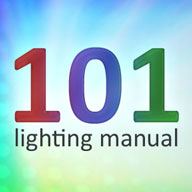JNewans
New elf
- Joined
- Aug 5, 2024
- Messages
- 6
Hi all and thanks for the great resources.
I got started last year with pixel lights and a Baldrick Board from Hanson Electronics, and this year I was hoping to add some "normal" (2-wire?) strings to the mix. I'm also setting up a display for my church that will similarly be a mixture of pixels and normal strings but over a large property.
Ideally I could easily have them doing similar patterns that the supplied driver provides (various alternating/twinkling/flashing) while also being able to sync them in with the rest of the show - turning whole strings off, pulsing them, etc.
My two questions are:
Thanks,
Josh
I got started last year with pixel lights and a Baldrick Board from Hanson Electronics, and this year I was hoping to add some "normal" (2-wire?) strings to the mix. I'm also setting up a display for my church that will similarly be a mixture of pixels and normal strings but over a large property.
Ideally I could easily have them doing similar patterns that the supplied driver provides (various alternating/twinkling/flashing) while also being able to sync them in with the rest of the show - turning whole strings off, pulsing them, etc.
My two questions are:
- Hardware - It seems like the standard approach for this will be the DMX2-24 then a long Cat5 run to a USB-DMX adapter on the Pi. Otherwise I could use the 2811DC2-30 with a Baldrick or QuinLED controller to go E1.31->WS2811->2-wire. Just checking there's no obvious way to get a bunch of 2-wire outputs responding to a network-based protocol, or "gotchas" with either of those approaches?
- Software - I've found varying reports on how one would enter these into XLights (Adding every prop twice?), is there a straightforward way that I can add them so that the lights are in the correct positions and respond appropriately to the patterns while still being easy enough to do simple sequences?
Thanks,
Josh

